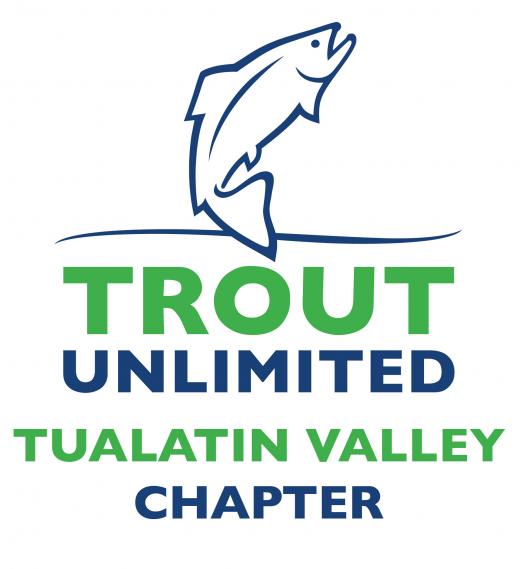The Trout Line April 4, 2022
THE TROUT LINE
April 4, 2022
Welcome to The Trout Line Newsletter! This is our Tualatin Valley Trout Unlimited Chapter newsletter that will be coming out twice a month on the 1st and 3rd Mondays of the month.
April Chapter Meeting
Our plan for the April Chapter Meeting was to have a virtual speaker at the Old Market Pub where chapter members could get together, have a raffle and watch the presentation but the Old Market Pub had a kitchen fire and is currently closed. This means the April Chapter Meeting will be completely virtual. At the bottom of this article will be the link for the zoom meeting.
Snake Rivers Dams
TU grassroots campaign to remove the Lower Four.
A special presentation for the Tualatin Valley TU chapter.
Wednesday, April 13th, 6:30 pm.
The Oregon Council of Trout Unlimited and TVTU invite you to a Zoom presentation outlining TU’s campaign to remove the four lower Snake River dams. This is an opportunity to hear the reasons this is necessary, how we are working to make it happen and how you can help. This is a live program where you can ask questions and get answers. Our presenter is Eric Crawford, TU’s North Idaho Field Coordinator. Eric came to TU following a lengthy tenure with Idaho Fish and Game. He is an avid angler with a mean-looking Spey cast (photo above). He knows the Snake River basin, the issues, and the science.
Why now? Congressman Simpson’s proposal. https://www.tu.org/magazine/snake-river-dams/mike-simpson-conserving-the-future
For more background see Eric’s interview in the Flylords digital magazine. https://flylordsmag.com/boots-on-the-ground-eric-crawford
Zoom link:
Topic: TVTU April Chapter Meeting
Time: Apr 13, 2022 06:45 PM Pacific Time (US and Canada)
Join Zoom Meeting
https://us06web.zoom.us/j/86335539928?pwd=UTJYZWtRMzMzUHBpc1dBdkprMVhhQT09
Meeting ID: 863 3553 9928
Passcode: 029797
One tap mobile
+17207072699,,86335539928#,,,,*029797# US (Denver)
+12532158782,,86335539928#,,,,*029797# US (Tacoma)
Dial by your location
+1 720 707 2699 US (Denver)
+1 253 215 8782 US (Tacoma)
+1 346 248 7799 US (Houston)
+1 646 558 8656 US (New York)
+1 301 715 8592 US (Washington DC)
+1 312 626 6799 US (Chicago)
Meeting ID: 863 3553 9928
Passcode: 029797
Find your local number: https://us06web.zoom.us/u/kca0vyL3AC
A Knotty Problem
Musing by Jim Fenner
In a recent newsletter, Mike Gentry mentioned in his Fly of the Month column that he finished the fly with two or three half-hitches. That set my mind to wandering – which occurs a lot. I thought “Does he use tacky waxed thread? When tacky wax hardens, one half-hitch will keep a fly from falling apart. Why not use two jam knots, which does about the same thing as two half-hitches? Or use a Scot’s Hitch? One Scot’s Hitch takes the place of two half-hitches.” Then my mind started veering farther off course: I started thinking “Some people call a Scot’s Hitch a ‘Scotch Hitch’. However, when I lived in Limey Land half a century ago, I heard the ‘Scotch Hitch’ had something to do with drinking whisky (not ‘whiskey’, which is Irish!), but I no longer remember what the term means or refers to.” Then my straying mind took yet another tack: “My dear old, favorite (?) high school English teacher told us we should never end a sentence with a preposition. Does that apply to thinking, too?”
After that aside, I recalled watching an “old” Scot tie a “typical South Scotland” wet fly using exactly six turns of thread (!). He started with a Scot’s Hitch to secure the very tacky waxed thread to the hook, then took two tight turns to tie in the hackle stem, body, and ribbing material. After wrapping the body and ribbing over the hackle stem, he took two more tight turns to tie off the body and ribbing and secure the hackle stem even more. After wrapping two turns of hackle, he took two more tight turns of thread to secure it, then finished the fly with another Scot’s Hitch. Six turns of thread and two knots in about 30 seconds. Then he looked up and said, “When the wax hardens, this fly will not fall apart.”
The fly he tied was what we now call a “soft hackle”. To him, it was a standard wet fly style that they had been using for well over a century, a fly that did then – and still does – catch fish. Although I no longer remember the name of the pattern – if I ever did know it – it consisted of a wool yarn body, gold tinsel ribbing, and a mottled brown hackle, such as from a smallish game bird. The hackle was shorter than most people now use to tie soft-hackled flies, only extending to the point of the hook.

More Information:
TVTU Website: https://tualatinvalley.tu.org/
TVTU Facebook Page: https://www.facebook.com/tualatinvalleyTU/
C4C Facebook Page: https://www.facebook.com/christmasforcoho/


